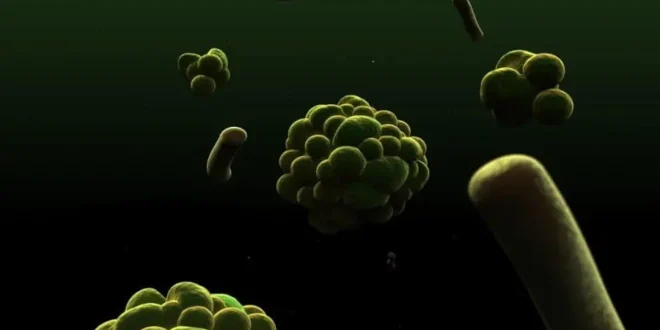Are human cells prokaryotic or eukaryotic? This fundamental question lies at the heart of our understanding of the building blocks of life.
Curious minds have long wondered about the intricate building blocks of the human body.
With trillions of cells working in harmony, it’s natural to question the classification of these microscopic powerhouses.
Cells make up every living organism and can be broadly classified into two major types: prokaryotic and eukaryotic.
Prokaryotic and eukaryotic cells are the foundation of life, each boasting unique characteristics that define their structure and function.
By understanding the cells, we can unravel the complexities of human biology, gain insights into cellular processes, and explore the mechanisms that drive life itself.
Are human cells prokaryotic or eukaryotic?
Human cells are classified as eukaryotic because they possess a distinct nucleus that houses their genetic material, DNA.
Additionally, these cells contain membrane-bound organelles such as mitochondria, endoplasmic reticulum, and Golgi apparatus.
A nucleus and membrane-bound organelles distinguish human cells from prokaryotic cells, which lack these structures.
What Is A Cell?
A cell is the basic structural and functional unit of all living organisms. It is the smallest unit of life that can exist independently and perform all the necessary functions for survival.
Cells are microscopic and are composed of various organelles that work together to carry out specific functions.
Each cell contains genetic material, either DNA or RNA, which carries the instructions for the cell’s activities. Cells can be classified into two main types: prokaryotic and eukaryotic.
What Are Prokaryotic Cells?
Prokaryotic cells are a type of cell that lacks a nucleus and other membrane-bound organelles such as mitochondria and endoplasmic reticulum.
They are found in organisms known as prokaryotes, which include bacteria and archaea. Prokaryotic cells are generally smaller and simpler in structure compared to eukaryotic cells.
The lack of a nucleus in prokaryotic cells means their genetic material, typically a single circular DNA molecule, is in the cytoplasm.
What Are Eukaryotic Cells?
Eukaryotic cells comprise the complex organisms found in the plant, animal, fungi, and protist kingdoms. These cells are characterized by a nucleus, which houses the genetic material as DNA.
In addition to the nucleus, eukaryotic cells contain other membrane-bound organelles such as mitochondria, endoplasmic reticulum, Golgi apparatus, and lysosomes.
These organelles play important roles in various cellular functions, such as energy production, protein synthesis, and waste disposal. Eukaryotic cells are typically larger and more complex than prokaryotic cells.
The Structure And Function Of Human Cells
The structure and function of human cells form the foundation of our understanding of human biology.
These microscopic units, which are the building blocks of life, play a crucial role in maintaining the balance that sustains our existence.
By examining the components within these cells, we can better understand how they function and contribute to our overall well-being.
Parts Of A Human Cell
The human cell consists of the following major parts:
1. Nucleus
The nucleus serves as the control center of the cell. The nucleus contains the DNA, which carries an individual’s genetic information. It regulates the activities of the cell and plays a crucial role in cell division.
2. Endoplasmic reticulum
This organelle synthesizes, folds, and transports proteins within the cell. It consists of a network of membranes that extends throughout the cytoplasm.
The endoplasmic reticulum can be rough or smooth, depending on the presence or absence of ribosomes on its surface.
3. Golgi apparatus
It is involved in modifying, sorting, and packaging proteins and lipids for transport within or outside the cell. The Golgi apparatus consists of a stack of flattened sacs called cisternae and plays a crucial role in cellular secretion.
4. Cytoplasm
The cytoplasm is the gel-like substance that fills the cell and surrounds its organelles. It contains various molecules, such as proteins, enzymes, and nutrients, essential for cellular processes.
The cytoplasm also serves as a site for many metabolic reactions and supports the organelles within the cell.
5. Plasma membrane
The plasma membrane forms the outer boundary of the human cell. It comprises a phospholipid bilayer with embedded proteins and serves as a selectively permeable barrier, controlling the movement of substances in and out of the cell.
The plasma membrane also plays a vital role in cell signaling and communication with the external environment.
6. Mitochondria
Mitochondria are often referred to as the powerhouses of the cell. They are responsible for generating energy through ATP through cellular respiration. Mitochondria have their DNA and can replicate independently within the cell.
7. Ribosomes
These are small, spherical organelles found either free in the cytoplasm or attached to the endoplasmic reticulum.
They are responsible for protein synthesis and play a vital role in translating the genetic information from the DNA into functional proteins.
8. Lysosomes & Peroxisomes
Lysosomes and peroxisomes are specialized organelles that break down macromolecules and cellular waste.
Lysosomes contain enzymes that degrade proteins, lipids, and carbohydrates, while peroxisomes are involved in detoxification processes and the breakdown of fatty acids.
Vital Functions Performed By Human Cells
Human cells perform a variety of vital functions that are essential for the optimum functioning of the body. Let’s look at some of the most important functions of human cells.
1. Growth
Human cells constantly divide and multiply to facilitate the growth and development of various tissues and organs.
This process is particularly important during childhood and adolescence when rapid growth occurs.
Through cell division, new cells are produced to replace old or damaged ones, ensuring that the body continues to grow and develop healthily.
2. Reproduction
For life to continue, cells must have the ability to reproduce. Reproduction allows for the creation of new cells, which leads to new tissues and organs forming.
This process involves DNA replication and subsequent cell division, leading to the formation of identical daughter cells.
3. Metabolism
Metabolism refers to the chemical processes that occur within cells to maintain life. Cells perform various metabolic activities, including synthesizing molecules, breaking down nutrients to release energy, and eliminating waste products.
4. Energy production
Energy production is closely tied to metabolism and is another essential function human cells perform. Cells require energy to carry out their various activities, such as muscle contraction, nerve impulse transmission, and synthesis of new molecules.
Energy production occurs within specialized structures called mitochondria, which generate adenosine triphosphate (ATP), the primary energy currency of cells.
5. Transport
Cells facilitate the movement of substances within the body. Through the plasma membrane, cells regulate the passage of molecules in and out of the cell, ensuring the transport of nutrients, hormones, and waste products.
This transportation occurs through various mechanisms, such as diffusion, active transport, and facilitated diffusion.
Proper transport ensures cells receive nutrients and oxygen while eliminating waste products and maintaining a stable internal environment.
6. Structure & support
Cells form the building blocks of tissues, which come together to form organs and organ systems. These cells provide the necessary structural framework to maintain the body’s shape and integrity.
For example, bone cells strengthen and support the skeletal system, while skin cells form a protective barrier against external threats.
How Are Prokaryotic And Eukaryotic Cells Similar?
Both prokaryotic and eukaryotic cells share certain characteristics, such as the presence of ribosomes, genetic material, a cytoplasm, and plasma membranes.
Within the cytoplasm is a substance called cytosol, which acts as an intracellular fluid and provides a medium for various cellular processes. This is where most of the cellular activity occurs.
What Is DNA?
DNA, which stands for deoxyribonucleic acid, is a molecule that carries the genetic instructions for the development, functioning, and reproduction of all living organisms.
It is a double-stranded helix structure made up of nucleotides that contain four different bases: adenine (A), cytosine (C), guanine (G), and thymine (T).
These bases pair with each other in a specific manner, with A always pairing with T and C pairing with G. This unique pairing allows DNA to be replicated and passed on from one generation to the next.
What Is Gene?
A gene is a DNA segment containing instructions for building and maintaining an organism. It is the basic unit of heredity, responsible for passing on traits from one generation to the next.
Genes comprise nucleotides, chemical building blocks consisting of a sugar, a phosphate group, and a nitrogenous base.
The sequence of these nucleotides determines the specific instructions encoded within the gene. These instructions are used by cells to produce proteins, which are essential for the structure and function of the body.
Conclusion
Are human cells prokaryotic or eukaryotic? Human cells are eukaryotic, characterized by their well-defined nucleus, which contains the genetic material of DNA.
Human cells also possess membrane-bound organelles, which play crucial roles in various cellular processes. Most of these organelles are absent in prokaryotic cells.
 Being Human
Being Human




